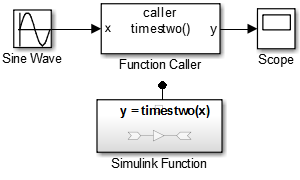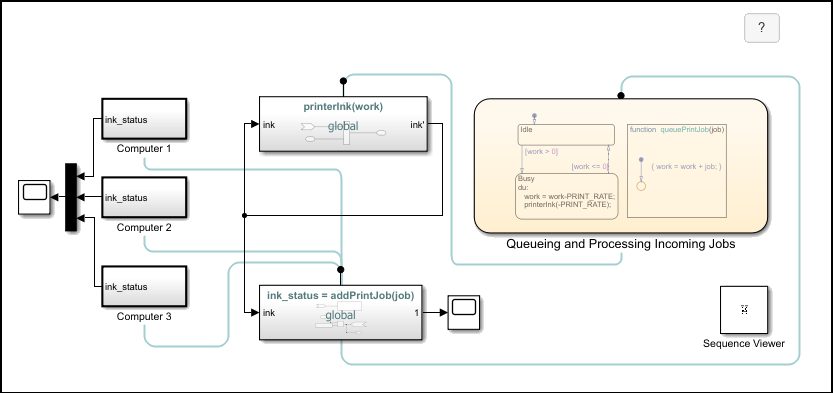Function Caller
调用 Simulink 函数
库:
Simulink /
User-Defined Functions
描述
Function Caller 模块调用并执行 Simulink® 函数。Simulink 函数指定函数原型,其中包括函数名称以及输入和输出参量。例如,当 Function Caller 模块调用原型为 y = f(u) 的函数时,Function Caller 模块的输入是 Simulink 函数的输入参量 u,而 Simulink 函数的输出参量 y 是 Function Caller 模块的输出。
在此示例中,Function Caller 模块配置为调用和执行在 Simulink Function 模块中定义的 Simulink 函数 y = timestwo(x)。为了测试函数调用,Sine Wave 模块连接到输入端口 x 以提供输入数据,Scope 模块连接到输出端口 y 以查看输出结果。

您可以调用通过以下方式定义的 Simulink 函数:Simulink Function 模块、作为导出函数的 Stateflow® Chart (Stateflow),或 S-Function 模块。有关定义 Simulink 函数的详细信息,请参阅在模型中定义 Simulink 函数。
有关详细信息,请参阅 Simulink Functions Overview。
使用 Simulink Function 和 Function Caller 模块的代码生成
如果您有 Simulink Coder™ 或 Embedded Coder®,您可以从包含 Simulink 函数的模型中生成代码。有关详细信息,请参阅 Simulink Function Blocks and Code Generation (Embedded Coder)和Configure Entry-Point Function Interfaces for Simulink Function and Function Caller Blocks (Embedded Coder)。
示例
端口
输入
输出
参数
模块特性
数据类型 |
|
直接馈通 |
|
多维信号 |
|
可变大小信号 |
|
过零检测 |
|
扩展功能
版本历史记录
在 R2014b 中推出另请参阅
Trigger | Simulink Function | MATLAB Function | Chart (Stateflow) | Function-Call Subsystem | Function Element Call



